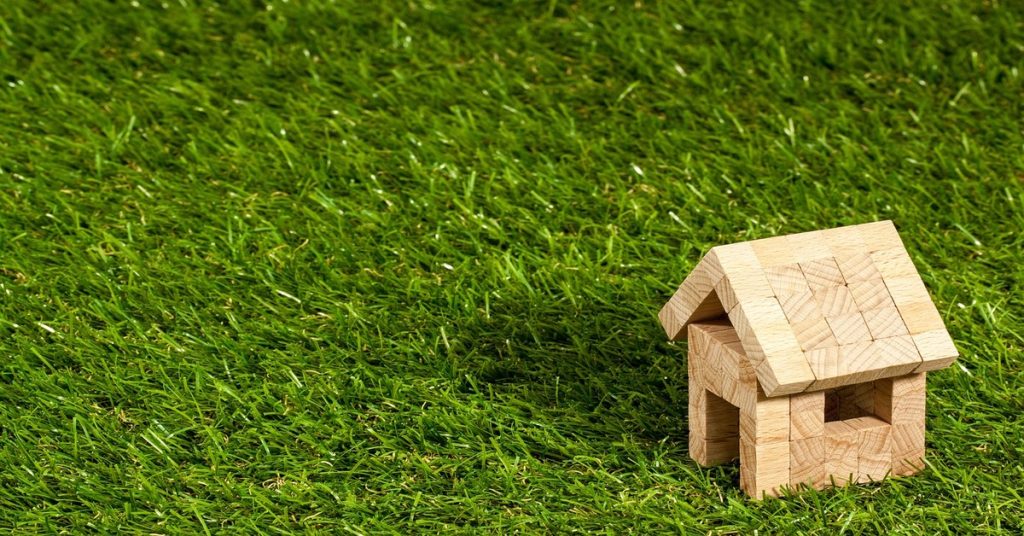

There are many types of roof materials, each one with a unique architectural style. It’s part of what gives a home its character, but did you know that certain styles are also better suited to different climates?
Australia is no stranger to adverse weather conditions, with a variety of climates from coast to coast. As a result, there is an eclectic mix of architectural styles throughout Australia and an abundance of Australian roof types to match.
There are also many different materials used, depending on the roof types but also personal preference. In this guide, we will cover everything you need to know about roofing materials and the types of roofs they suit in Australia. Stay tuned!
What Are the Different Types of Roofs?
Throughout the country, there are many different types of roofs, each better suited to certain climates and materials. Here are some of the more common roof types you might encounter.
Flat Roof
Many modern homes are constructed with flat roofs. They are easy and cheap to build, structurally safe, and also have an aesthetically pleasing, minimalist look.

Flat roofs have a smaller surface area, which means you need fewer roofing materials to cover them. As a result, they are more economical during construction. The shorter construction time also means reduced labour costs.
You will mostly see a flat roof on apartment blocks, high-rise buildings, and some modern houses. However, they are not entirely “flat” and usually have a small pitch to ensure water runoff.
Skillion Roof
Skillion roofs are similar to flat roofs, but they have more obvious pitched planes to ensure water and debris runoff. Usually, this is a single sloping roof surface.
Generally, a skillion roof is used for an extension attached to an existing roof. It’s great for multi-level homes and can add a touch of style by making a house look more architecturally complex. However, in some cases, you might see a house with a single skillion roof not attached to anything else.
Compared to a flat roof, skillion roofs are easier to maintain and clean because of the visibly significant pitch that facilitates water runoff.
Butterfly Roof
Butterfly roofs consist of two roof planes angled against one another; the two sides angle upward like a butterfly’s wings. There is a box gutter down the centre of the two roof planes to ensure water runoff, and this also removes the need for a downspout or traditional gutter system.
A butterfly roof can be a very stylish addition to modern homes. However, it is expensive to maintain due to building costs, and detailing the box gutter is also costly.
Curved Roof
Curved roofs are rare, but they do exist. You may see them in new developments around coastal areas – the Sydney Opera House is a famous (and perhaps exaggerated) example.
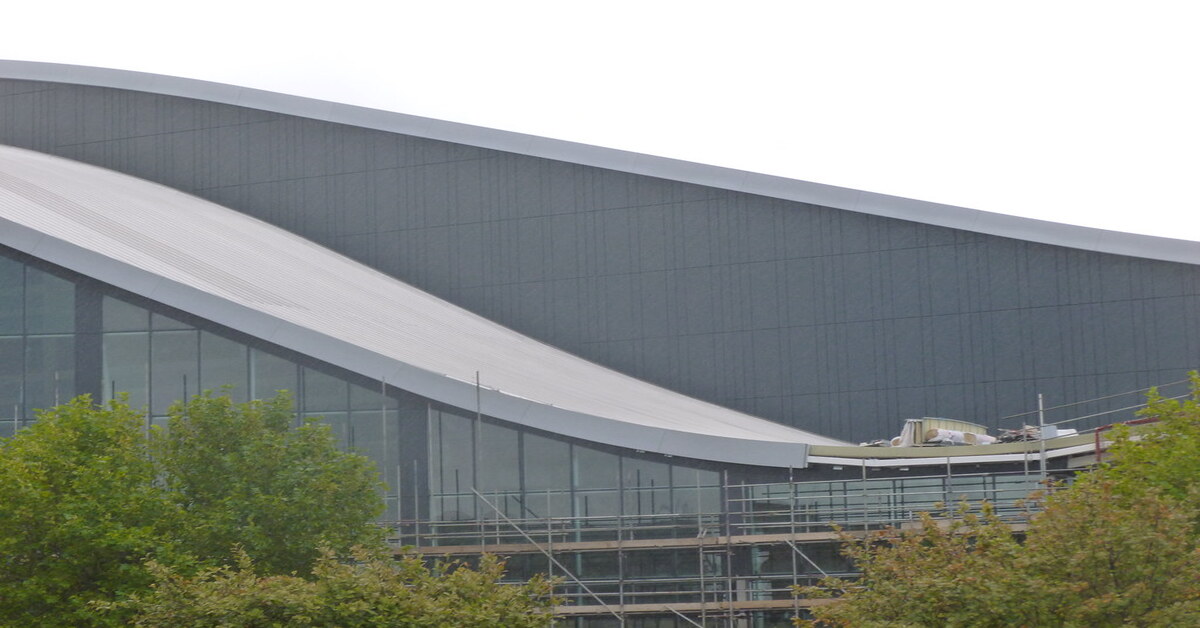
A curved roof is very expensive to build and maintain due to its shape. As a result, it’s not something commonly seen in residential homes, though you may see them in some new housing developments in large cities and coastal areas.
Commercial buildings use them more frequently as an expression of style, but depending on the number of curves, the owners must take care to clean the roof regularly.
Gabled Roof
If you picture a child’s drawing of a house, you will probably think of a gabled roof. Gabled roofs have a triangular shape, connecting at a top point. The construction allows space for an attic, which is why these make good family homes.
Also called a peaked roof, gabled roofs are typically tiled. There are more roofing materials involved than with a flat roof, but a tiled roof like this is still cost-effective to install and relatively easy to maintain.
Hipped Roof
Finally, a hipped roof consists of three or more sides that slope downward from a ridge at the top. It’s almost triangular in shape, but it does not have an exact point. These houses are very popular in Australia and well-suited to windy and coastal areas. They are strong, provide great shade, and look attractive.
What Roofing Materials Are Used in Australia?
There are many factors to consider when choosing a type of roofing material. This includes:
- The building style and design of the home
- The anatomy of the roof
- Australian building codes and state building codes
- Local climate
- Energy efficiency
Each material has its pros and cons and may be suited to different types of roof.
Let’s look at each type in more detail.
Terracotta Roof Tiles
Terracotta tiles are a popular roofing material in many areas, especially Sydney and the surrounding areas. The classic red tiling is aesthetically pleasing, but it’s also strong and durable, which is why it has existed as a construction material for decades.
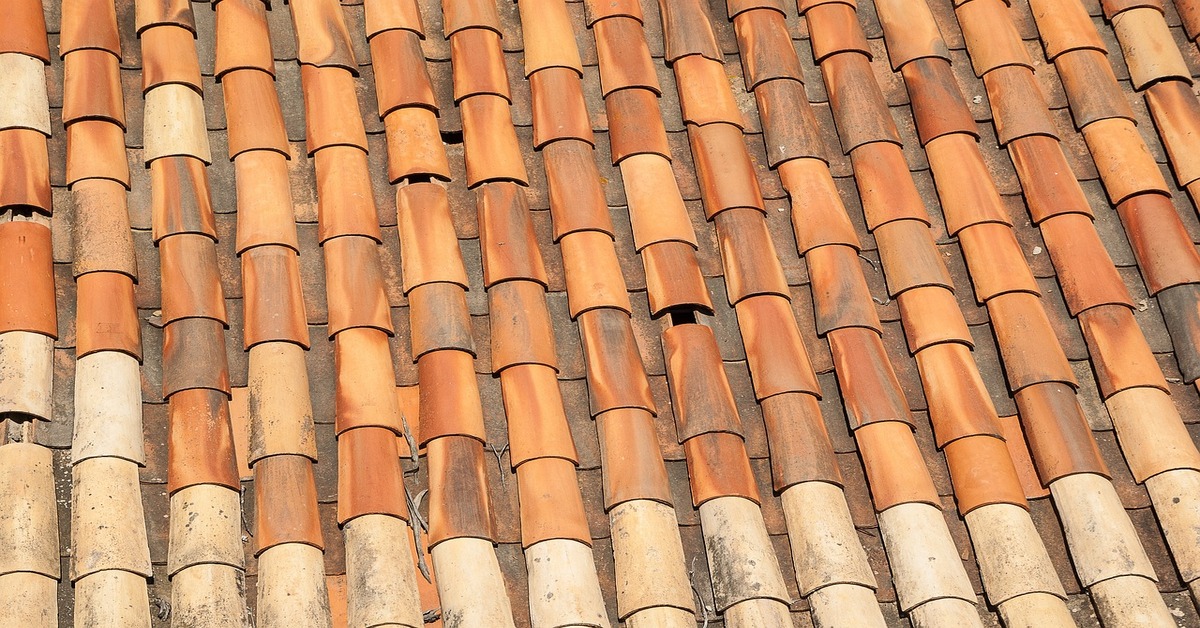
Terracotta means ‘baked earth’ in Italian, describing the material’s origin as a natural clay. Old-school tile makers used to form the clay tiles around a log or even the maker’s thigh, but you can now find mass-produced versions.
The natural density of terracotta tiles makes them a great fit for most homes because they can even out temperature fluctuations, making a home more energy efficient. Plus, they can reduce noise outside, making them great for homes near main roads and airports.
However, the disadvantage is that they will inevitably wear and break over time. Although waterproof, terracotta tiles can break in the event of a hailstorm or other impact.
Make sure to get a regular inspection to check for cracks and breaks, as falling tiles can be a hazard and can lead to leaks.
Cement Roof Tiles
Some tile roofs use cement as the main material. This type of roof tile is very strong. It hardens in the Aussie sun, too, making cement tiles stronger with age.
Cement or concrete tiles finished with a roof sealant are perfect for withstanding the weather and can last for decades if you use high-quality ones.
What’s more, cement tiles can be produced in various shapes and styles to mimic other roofs, making them a stylish option no matter what your preferences are.
Functionally, cement tiles are suitable for controlling temperature, reducing energy consumption and boosting efficiency. However, they are more porous than clay tiles, so the colour can fade quickly, and they will eventually become susceptible to leaks and breaks.
Slate Roof Tiles
Slate tiles have a very aesthetically pleasing look that can add curb appeal to a house. However, the material is comparatively fragile and can require more maintenance. You should also make sure to find a skilled roofer who can ensure the tiles are correctly installed.
Roofing slate in Australia is mostly imported, adding to the energy debt of the material, and slate quarries may have a negative environmental impact. If you want your roof to be environmentally friendly, slate is not the best option.
Metal Roof Tiles
Metal tiles are a compromise between a full sheet metal roof and a tiled roof. They are made using pressed sheet metal, designed to mimic traditional tiles, making them well-suited to roof types like gabled roofs and hipped roofs.
A single large tile can be used in place of several concrete or ceramic ones, meaning it’s quicker and easier to install metal tiles. However, the metal is usually painted with colorbond or has a textured coating to mimic concrete tiles; this coating can easily become damaged over time, reducing the aesthetic appeal.
Metal tiles are not common, but they do exist, with a couple of Australian suppliers manufacturing them.
Colorbond Steel
Metal roofs are covered with a thin steel roofing sheet less than 1mm thick. Typically, the steel is coated in galvanised iron (zinc) or Zincalume (an alloy of aluminium, zinc, and magnesium). For coastal environments, there is also a stainless steel version of colorbond.
There are several styles available, including flat metal or corrugated iron. They are common for both residential and commercial roofing, but are best suited to a flat roof.
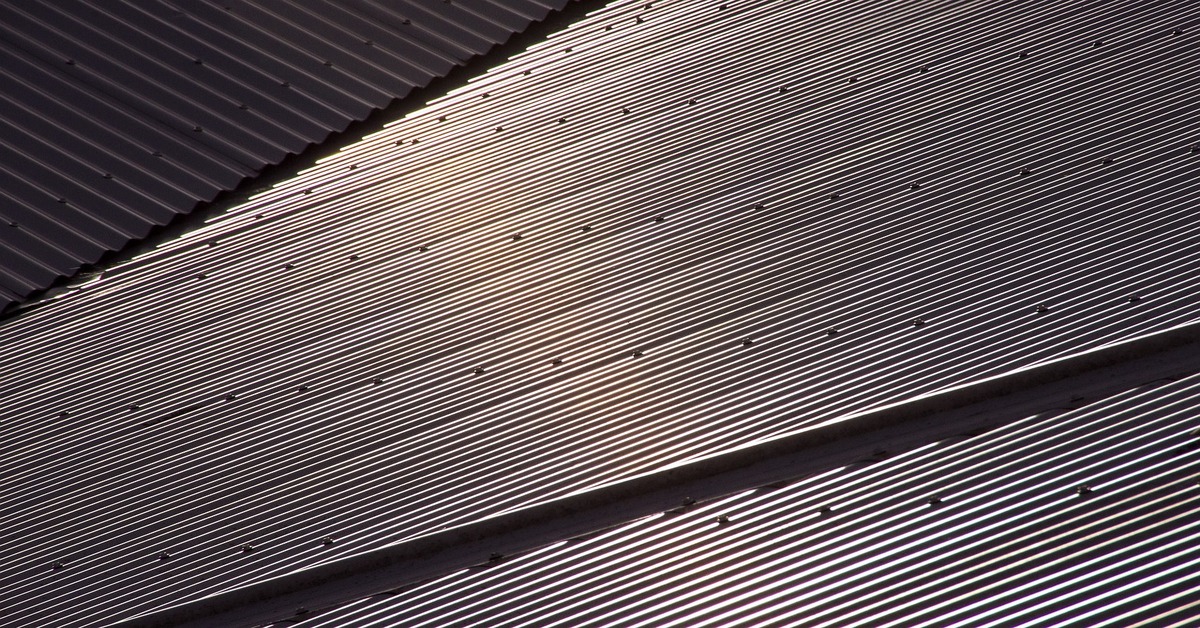
Builders install metal roofs by screwing or nailing the sheets to wood or steel battens or clipping them onto concealed brackets. The sheets are overlapped to prevent water from getting in, with the concealed bracket method offering a more reliable weather seal.
Metal roofing has many advantages, including the fact that it is light, easy to handle, and quick to install. If installed correctly, it can last decades and need minimal maintenance. Plus, the metal sheets are recyclable and may even be made from recycled materials.
Disadvantages include the fact that sharp edges can become a hazard when cleaning gutters, and without proper care, they may rust.
Insulated Panels/SIPs
Another type of metal roof is insulated panelling, similar to structural insulated panels (SIPs). Insulated roofing material consists of two sheets, typically painted metal, like colorbond, bonded to each side of a block of insulating foam. Again, SIPs are best suited to a flat roof or skillion roof.
Insulated panels are strong, lightweight, and easy to install. They are great for energy efficiency and can also provide insulation from noise, which is great for homes in busy areas.
Similar to other metal roofs, SIPs require little maintenance, but they also have the same disadvantages.
Asphalt Shingles
Although not as common in Australia, asphalt shingles can be found on some homes. They are not a structural roofing material, but they are used to finish the roof surface by covering sheets of marine-grade ply.
They consist of thin felt sheets mixed with asphalt, then covered with mineral stabilisers to increase fire resistance and durability. Their installation is complex because the roofer usually adds another layer of asphalt over the ply before the shingles to improve durability, leading to a lengthy and expensive process.
That said, when installed properly, they can last 50 years or more. Indeed, many come with a 40-year warranty.
Wood Shingles and Shakes
Wood shingles are another option, and they are probably the most environmentally friendly one because they are renewable and biodegradable.
Essentially, wood shingles are pieces of timber cut into small boards, usually 10-14mm thick. They are installed by nailing them in place over a plywood substrate and then coating them with wood oil.
Most of the roof’s structure comes from the plywood beneath, with timber used as a finishing material.
This is an excellent option for curb appeal, but it is not the most long-lasting roofing material.
What is the Best Roof Design?
No roof design is guaranteed to be the best option. It depends on many factors, and this applies to both the roof style and the materials used. Residential and commercial roofing options can also be different.
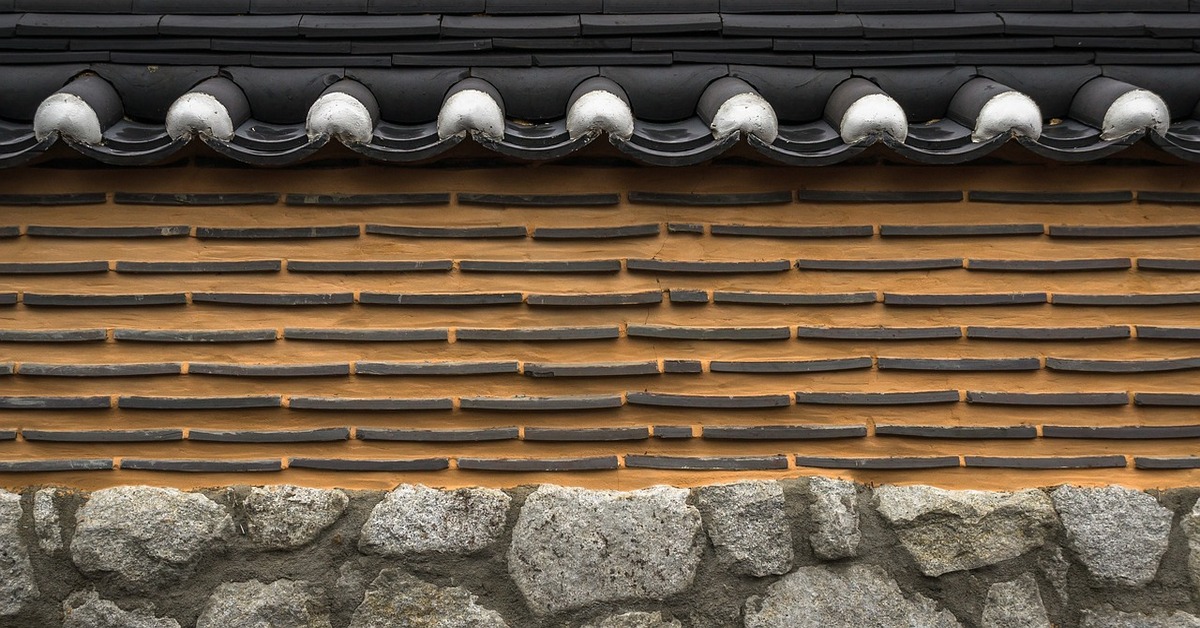
The area you live in can often affect the best type of roof and the materials you can use. The Australian climate varies drastically, so make sure you consider the weather where you live when choosing a roof.
For example, houses near beach areas can benefit from a hipped roof, which has high resistance to strong winds. Meanwhile, terracotta tiles are ideal in places with temperature variability from season to season due to their insulation qualities.
If you are building a home or renovating an existing roof, it’s best to consult a professional on the types of roofs and materials available to you. They will be able to assess your unique situation and advise you on the best value materials and structural design.
A professional roofer can give you advice on aesthetics but also on building a house that has a great structure, improving its integrity and energy efficiency. For example, RapidRidge is a great way to reduce temperature and moisture build-up in the roof space, ensuring that whichever material you choose lasts longer.
What Else Can You Do with a Roof?
Beyond the roofing material and roofing structures, Australian roof types vary in many ways. Homeowners have the option to customise their set-up by including a box gutter to improve the style or painting the tiles to transform it into their dream home.
There are also options to make your house more eco-friendly, including adding solar panels. Another option is to transform a standard flat roof into a green roof by planting flowers and shrubbery on it. Not only is this good for the local environment and biosphere, but it also provides great shade and insulation for the home below.
Different roof styles reflect the character of a home, so feel free to make yours unique.
Summing up
Australian roof types come in many shapes and sizes, from a curved roof to a peaked roof. The best design depends on where you live, the local climate, and the house’s structure. In general, though, Australian homeowners have a variety of things they can do with their roofs.
It’s essential to consider your budget and any potential roof repair costs, as some materials need more maintenance than others. Roof restoration services can be costly, but they are worth it if you want to save money down the line.
Contact Evo today to find out more about roof restoration services and roof repair.
FAQs
The most frequently asked questions on Australian roof types and materials.
1. What is the Best Roof Material in Australia?
The best material for Australian roof types depends on where you live. Terracotta tiling and steel colorbond are both very popular options, each with its own advantages and disadvantages. When choosing a material, make sure you carefully consider the roof shape, roof pitch, and local climate.
2. What is the Most Common Australian Roof Type?
Australian roof types come in all shapes and sizes, but the hipped roof is the most common. Its shape and style suit a variety of climates, from resisting strong coastal winds to facilitating water run-off. It’s a great all-rounder roof, but it’s also stylish and classic, which is why it’s the most common Australian roof.
3. What is the Best Roofing Material for Coastal Areas in Australia?
In coastal areas, metal roofing is a very popular option. Stainless steel colorbond is the most popular, but copper is also a possibility because it will not corrode. With the right finishing, metal roofs are fire-resistant, corrosion-resistant and insect-resistant. Plus, they are cost-effective and require little maintenance.
